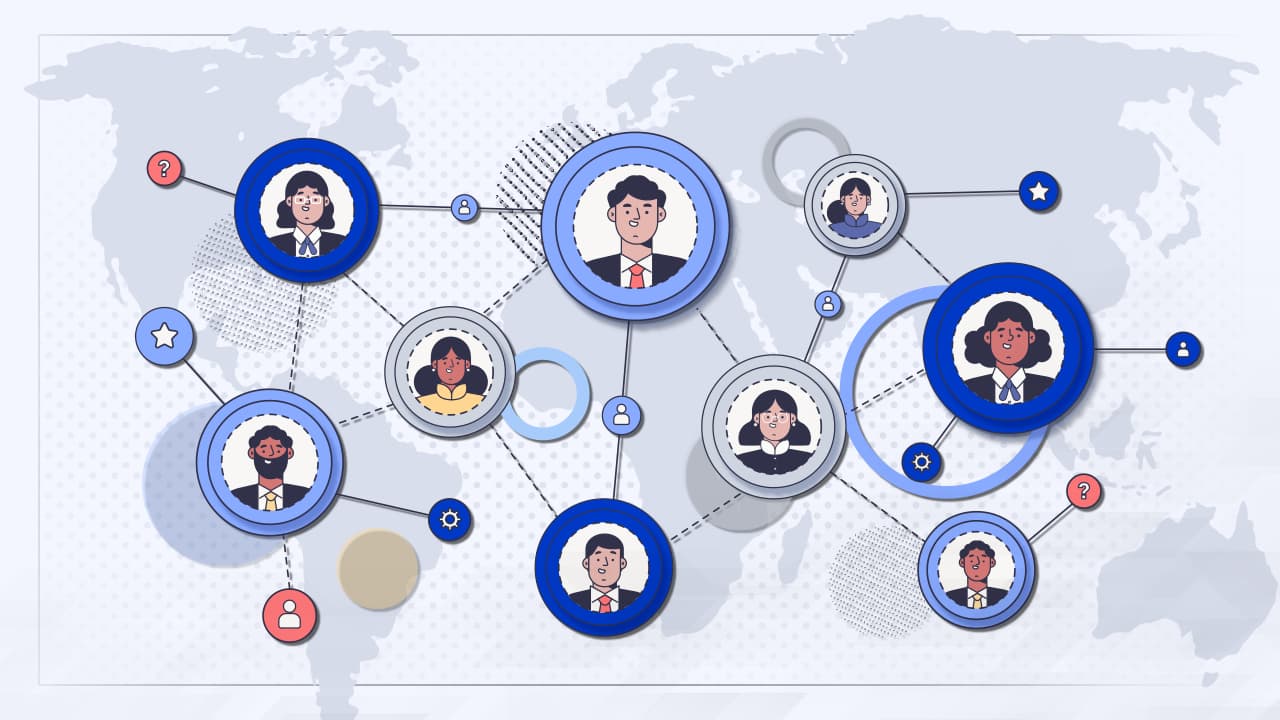In today’s competitive landscape, businesses embrace omnichannel marketing to provide customers with a seamless and personalised experience. This strategy breaks down the barriers between online and offline interactions, putting the customer at the centre.
In this blog post, we explore how omnichannel marketing is revolutionising how businesses connect with their customers, highlighting fundamental principles, success stories, and the benefits and challenges of implementation. Get ready to discover the transformative power of omnichannel marketing in enhancing customer experience.
What Exactly is Omnichannel Marketing?
Table of Contents
ToggleAn organisation’s comprehensive approach to each client touchpoint across channels is called an “omnichannel strategy.” With an omnichannel strategy, businesses aim to provide customers with a unified, consistent experience across digital and physical touchpoints. To reach consumers throughout the customer journey, all the elements must be approached as part of a single brand experience.
The complete customer experience is covered by an omnichannel approach, including brand discovery at the top of the marketing funnel, purchase, customer loyalty, and everything in between. Because audiences get the same experience with your brand across channels, an effective omnichannel strategy makes purchasing easy and seamless.
As customers progress down the sales funnel, omnichannel marketing is the seamless
integration of branding, message, and online and physical touchpoints, resulting in a more
significant customer experience.
Omnichannel marketing views marketing strategies from the consumer’s perspective. It enables customers to engage with companies through various platforms, such as social media and customer care phone numbers. To ensure a seamless and delightful customer experience across all channels, an effective omnichannel strategy includes these key elements:
- A recognisable and consistent brand voice and vision.
- Personalised communication tailored to individual preferences.
- The utilisation of information from past interactions and the current stage of the buyer’s journey.
What Distinguishes Multichannel from Omnichannel?
While both omnichannel and multichannel approaches aim to engage customers across multiple platforms, they have distinct differences. In multichannel, the focus is on individual channels and how transactions occur within them. On the other hand, omnichannel focuses on providing an optimal experience as customers transition between channels, recognising that the customer journey may span across various channels.
Now, let’s explore the nuances between these two approaches in greater depth.
Multichannel
The goal of multichannel, which is to disseminate content and adverts across many channels, is considerably more straightforward. A multichannel approach makes a company accessible to customers via the Internet, print media, in-person interactions, etc. The consumer may select the channel they wish to connect with the brand, yet the information and interactions within these channels are frequently quite compartmentalised. In light of this, multichannel is more representative of operations, utilising all appropriate channels, whereas omnichannel is more representative of the entire customer experience.
Omnichannel
Organisations may adopt a consumer-centric omnichannel strategy that considers the whole customer journey. In addition to making companies available across online and physical channels, omnichannel also ensures a seamless, integrated experience. Transitions are smooth when customers travel between devices, online and offline channels, and messages are based on previous interactions.
What Makes Omnichannel So Crucial?
Your marketing has to change to reflect the changes in consumer behaviour and advertising technologies. Your brand’s visibility and messaging should be consistent across all your marketing platforms, which can be achieved with an omnichannel strategy. No matter how or where your consumer interacts with your business, you can personalise specific messaging by developing an integrated omnichannel approach.
Your brand’s visibility and messaging should be consistent across all of your marketing
platforms, which can be achieved with the aid of an omnichannel approach.
Furthermore, adopting omnichannel is crucial since regular interactions may enhance the customer experience. Improved customer experiences may lead to greater conversions when paired with additional possibilities for engagement across channels.
Third, omnichannel marketing lets your company contact the appropriate clients at the right time. This improved reach may result in better-optimised media spending, raising the return on investment (ROI).
The Development of an Omnichannel Approach
An established foundation and coordinated strategy are necessary to provide an omnichannel customer experience. Your channels must cooperate to provide your clients with the greatest experience possible. Creating your strategy involves the five essential processes of insights gathering, analysis, segmentation, development of logistical considerations, and optimisation.
- Do the research and gather information
As mentioned, the main goal of an omnichannel strategy is to put the consumer first. However, you must first comprehend your clients’ demands to develop a customer-centric marketing strategy.
Gathering information about your current client experience is essential to do first. Start by going through your brand’s channels personally. Imagine yourself in the position of the customer while you browse your website, make a purchase, interact with a chatbot, and so on.
Find out what’s working and what needs to be improved by paying attention to how people respond to the buying experience. Then, start interacting with customers through focus groups, customer evaluations, or voice-of-customer (VOC) surveys. You can determine where to modify your plan by gathering this basic input and focusing on your audience’s opinions.
Incorporate studies from groups that manage various aspects of your organisation, and finally. Talk with a representative from each channel’s team, such as an email marketing specialist or a cashier at a physical shop. Get the inside scoop by learning their viewpoint on their area of expertise. - Analyse
You can only benefit from the important lessons you just recorded if you take the time to analyse and comprehend them. Making useable findings from this study is the next stage. And keep in mind that the focus of this experience is the consumer, not your brand. Making every decision from the perspective of the client will assist your audience in having a genuine experience.
In a similar vein, it’s vital to refrain from concluding. Although drawing inferences from your shopping experiences may be simple, remember that you may not be the target audience or a representative sample of the general public. To fully comprehend the ramifications of each finding, try to approach the topic from a fresh angle.
Your consumers’ requirements should be your primary concern throughout this process. Your ability to foresee these demands will enable you to implement change and construct your omnichannel technique beneficially and effectively. - Segment and Customise
It’s time to map the customer journey now that you better understand your consumer.
Once you understand how people interact with your business, you can direct those interactions and strategically put your messaging. You can customise messaging for a range of audiences by using omnichannel. Therefore, mapping the client’s journey is crucial to this stage. - Think about the tactical logistics
While taking a broad view of your omnichannel strategy may aid in maintaining consistency and fostering a strong brand identity, it’s also crucial to consider this plan’s smaller, more tactical aspects.
The Advantages of an Omnichannel Strategy
Today, most companies suggest that an omnichannel strategy can produce the best outcomes. Even though executing an omnichannel strategy is not easy, there are several advantages when done correctly. Since customers are used to receiving constant messages from different businesses, they are becoming more picky about the ones they want to interact with. The following advantages can be attained by developing omnichannel consumer engagements:
- A Better User Experience – This can be achieved because omnichannel marketing emphasises the individual user experience across devices more than on the channel. Companies can increase sales and improve retention rates by putting the client first rather than the platform.
- Cohesive Brand Approach & Identity – A cohesive brand approach and identity are essential for creating a seamless experience across channels. Organisations must establish a recognisable brand image and tone that align with the needs and values of their target audience. Organisations can develop a more comprehensive brand strategy by focusing on the overall customer experience and utilising brand standards to tailor each channel. This approach fosters customer loyalty and creates more impactful and consistent channel messaging.
- Revenue Growth – By implementing an omnichannel strategy, companies encourage customers to engage with them through multiple touchpoints and channels. Research findings indicate that customers who engage with various touchpoints are 30% more valuable. This highlights the importance of providing enhanced and diversified engagements at every stage of the buyer’s journey, as it can ultimately lead to improved revenue. Additionally, delivering more targeted messaging through an omnichannel approach fosters customer loyalty, increasing the likelihood of repeat business. While repeat customers may constitute a smaller portion of your client base, they often account for 40% of total sales.
- Better Attribution Data – A genuinely omnichannel strategy should include your data analytics and the user’s interaction with your business. Your plan may use this data to develop better-targeted advertising and maximise media expenditure. Brands may better understand the customer journey, when and where customers want to connect, and which campaigns have generated the greatest value by measuring engagements across channels.
An omnichannel marketing approach may send The proper message to customers at the right moment. By utilising omnichannel marketing, organisations may provide a consistent customer experience considering earlier touchpoints along the customer journey. This not only helps to build brand recognition among consumers, but it also improves engagement, boosts revenue and sales, and improves customer loyalty.
With modern marketing performance assessment technologies, businesses can more easily provide consumers with an omnichannel experience by determining the best media mix, targeting, and other factors. Organisations may better decide how to optimise marketing and reduce ad spending by analysing the customer journey at every stage.







